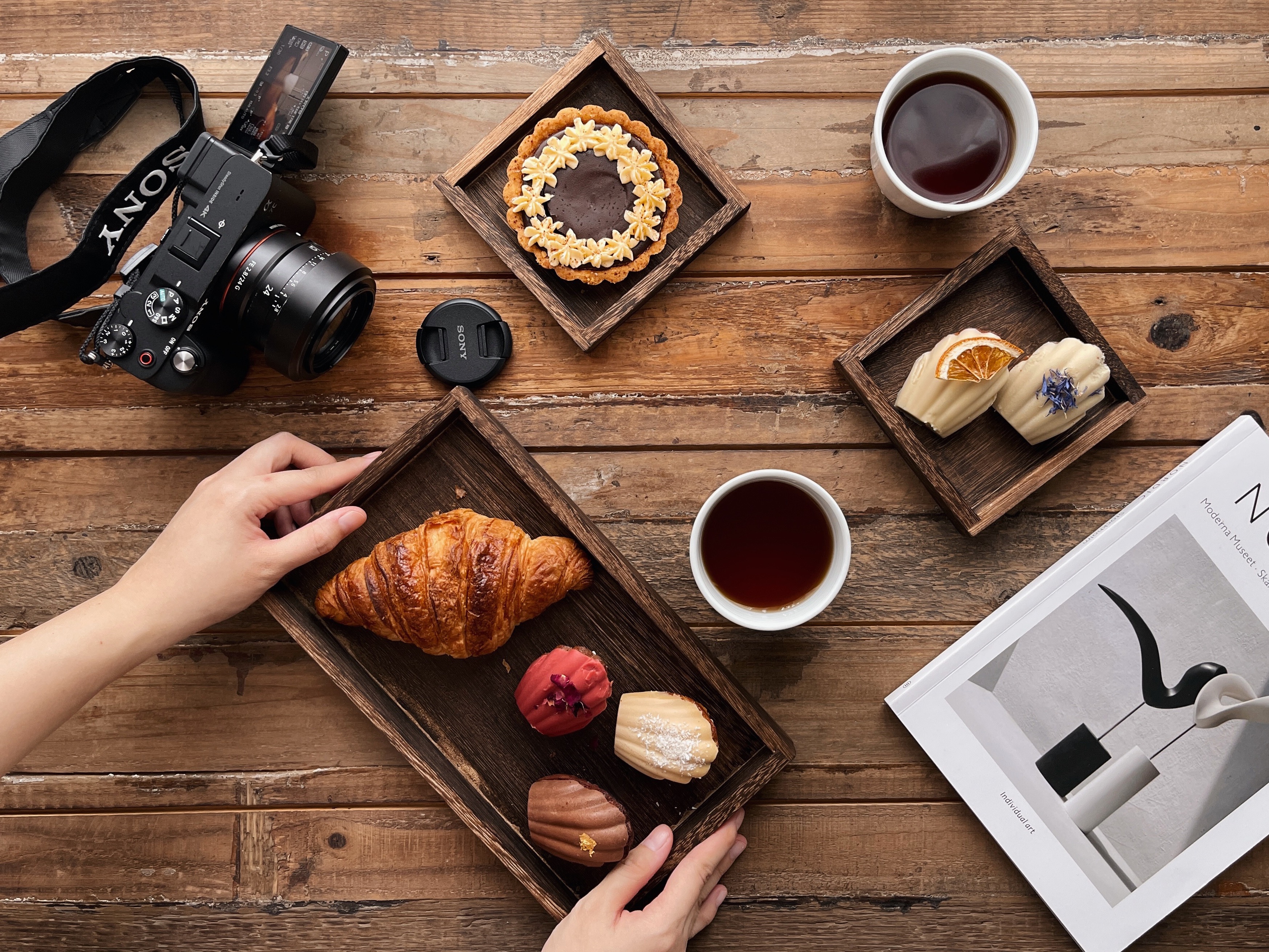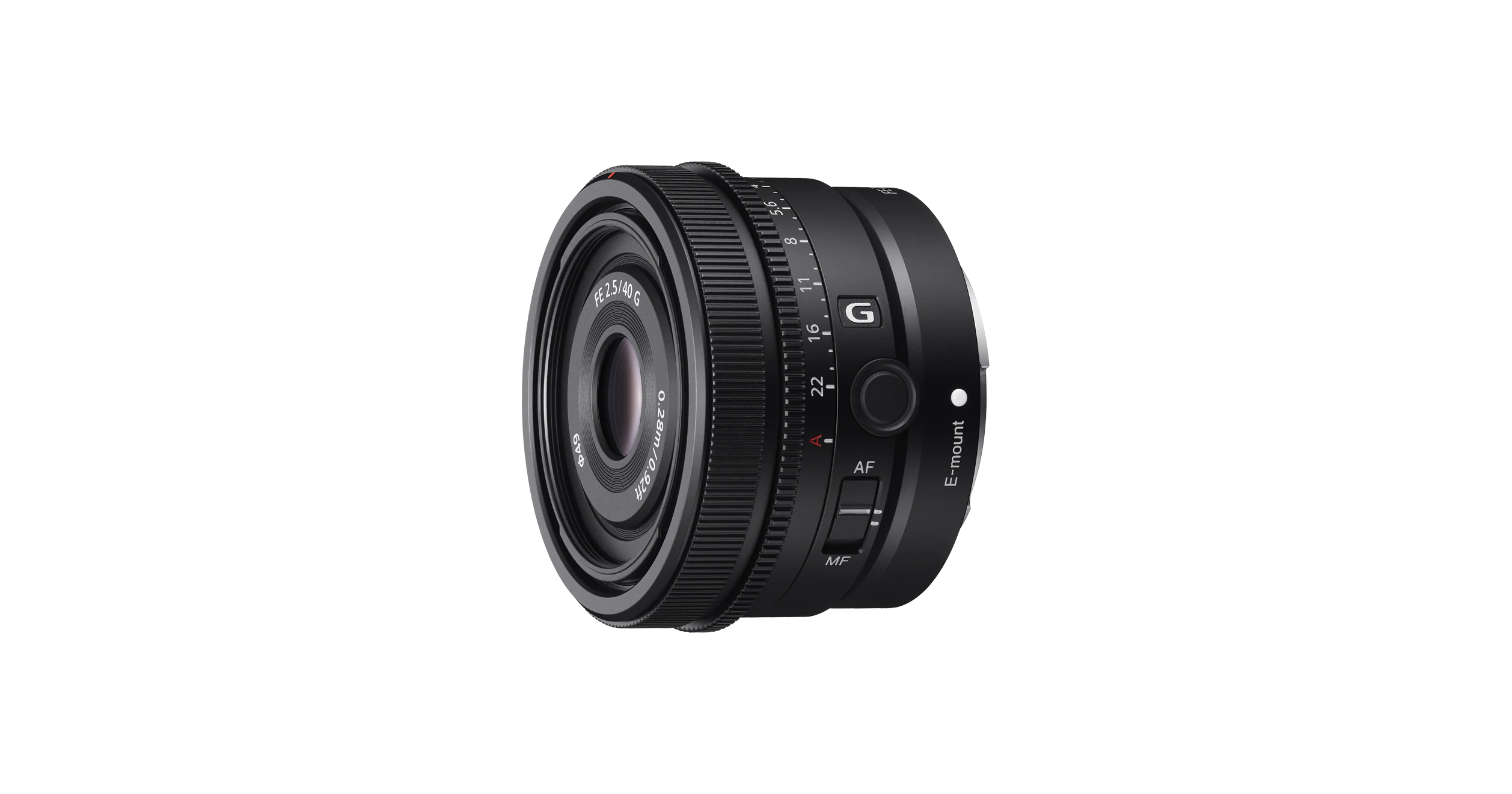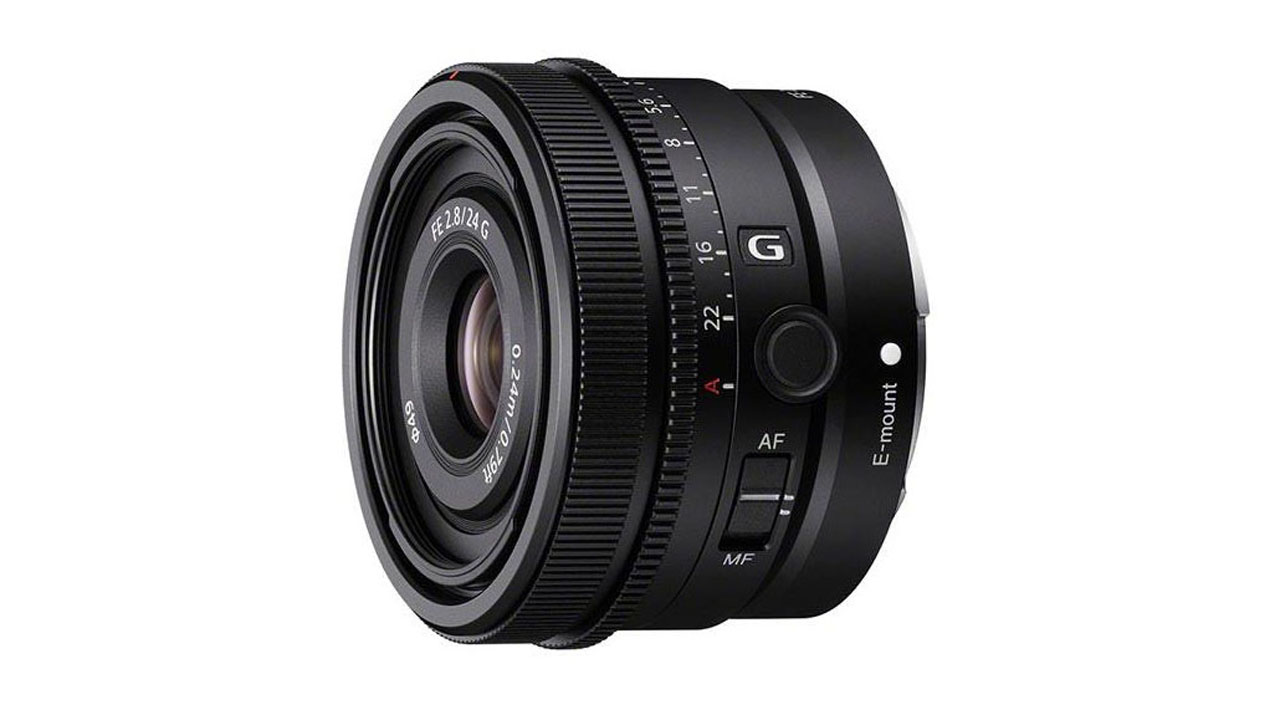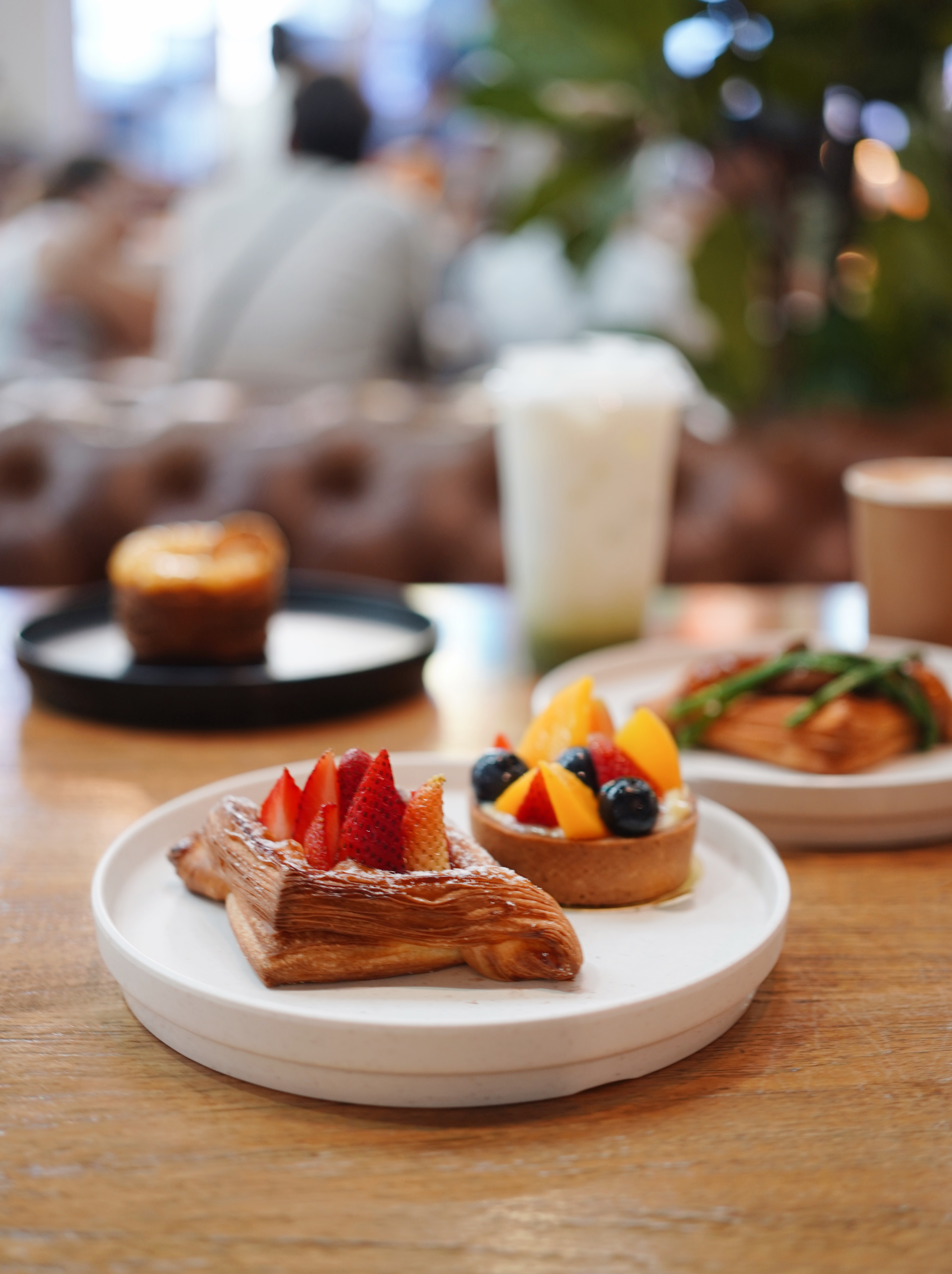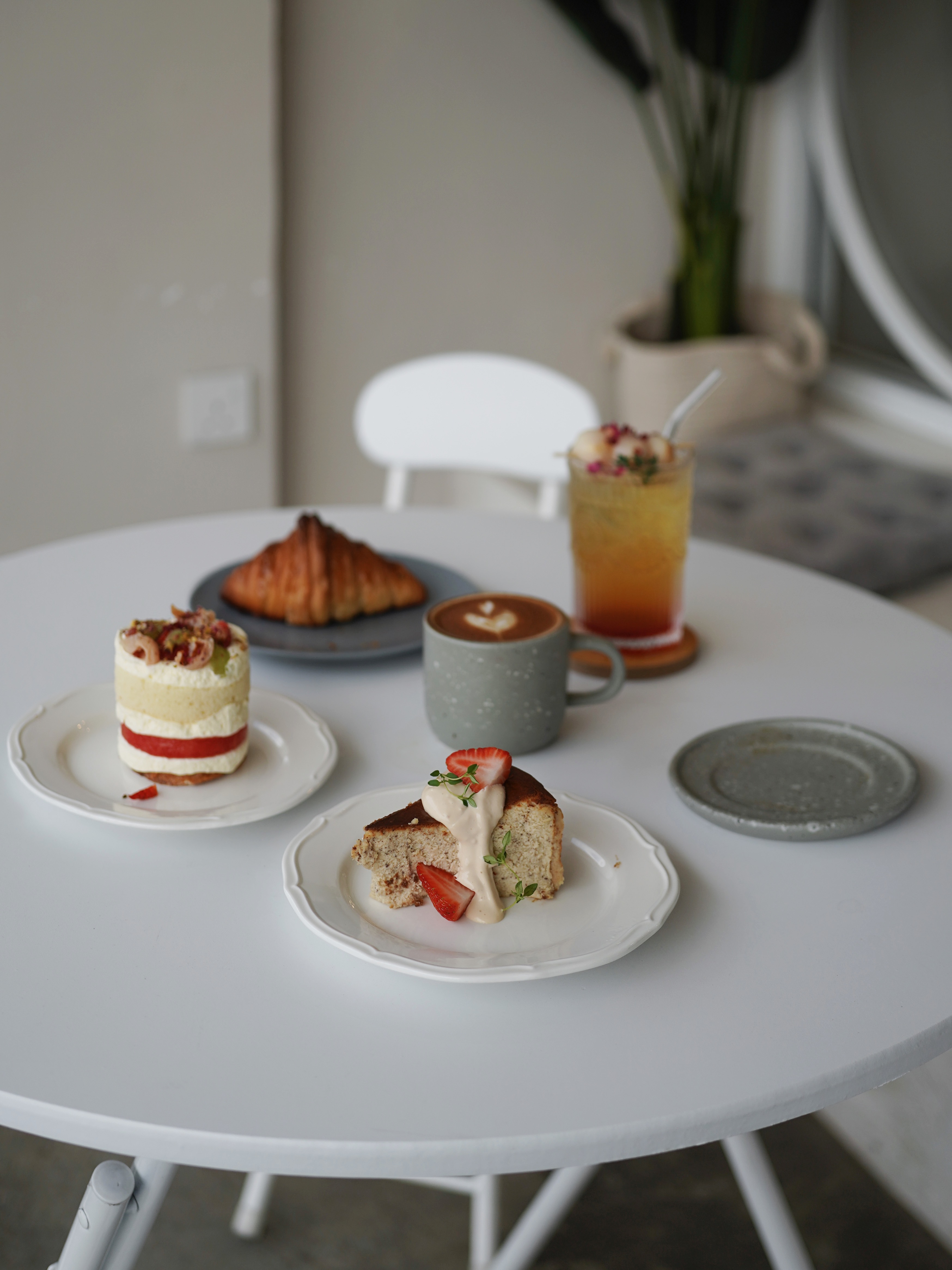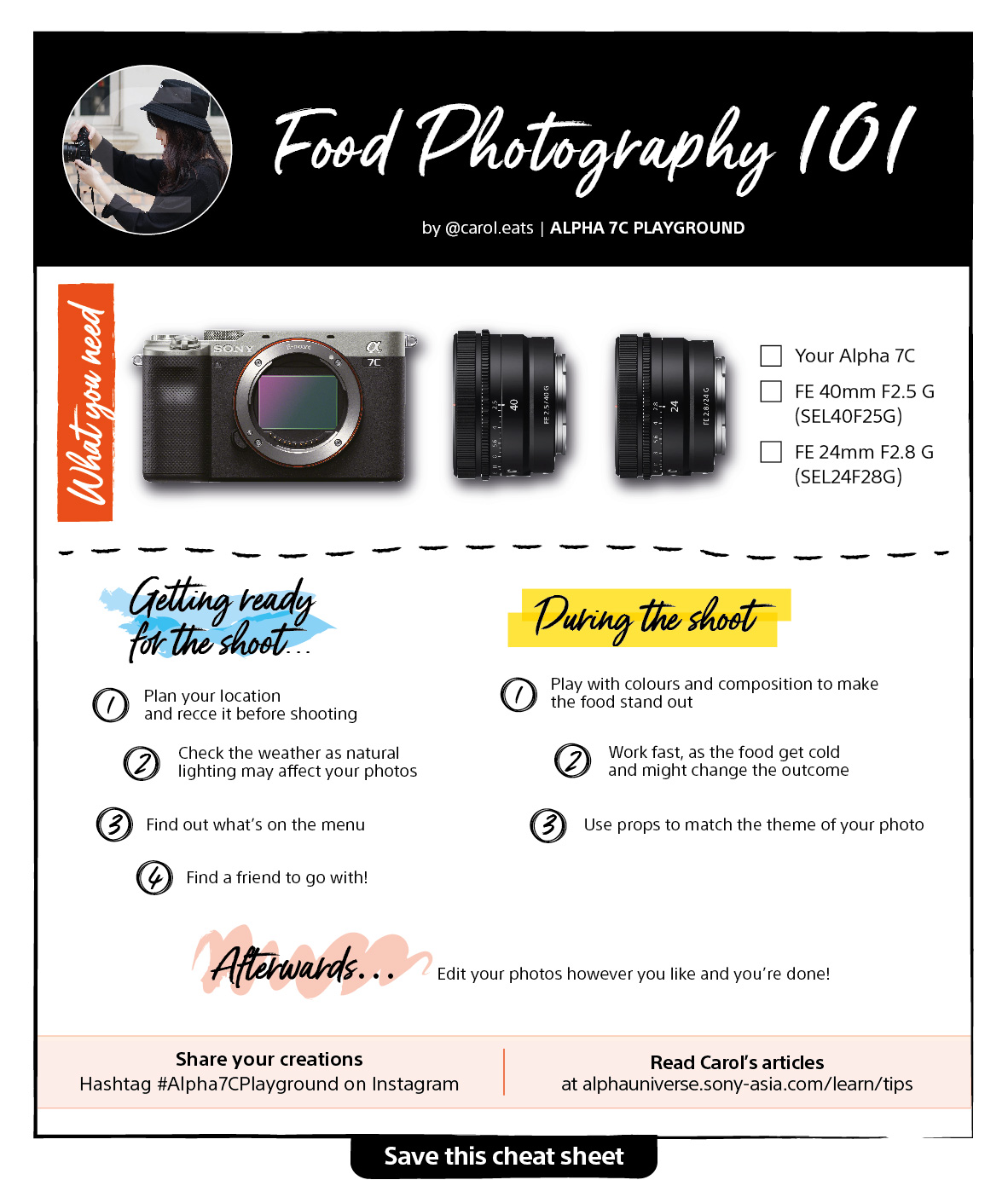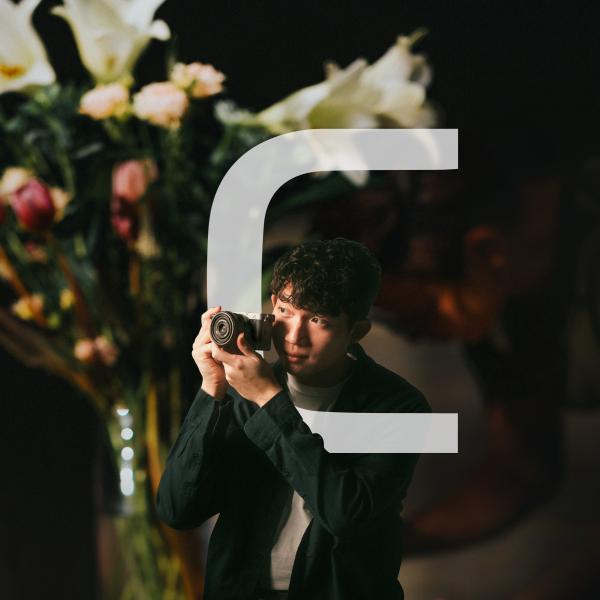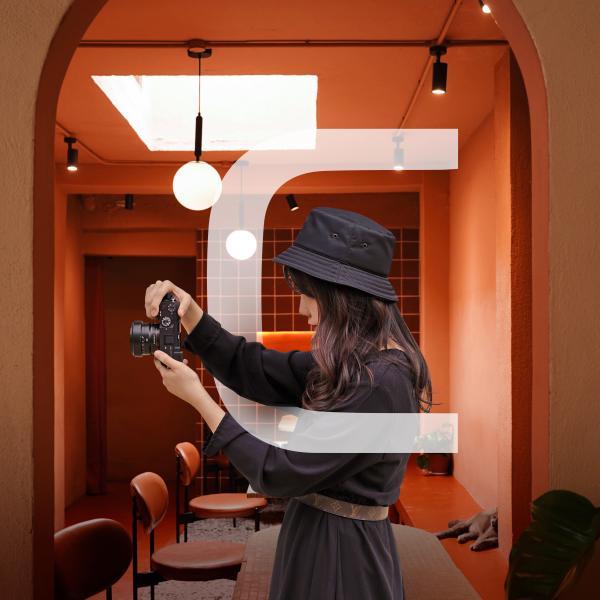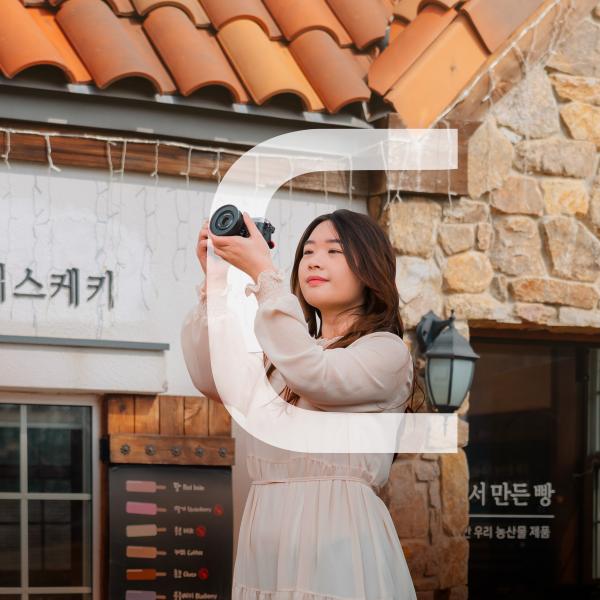Food Photography Framing Tips

Food photography is all about telling stories. There is no such thing as the correct angle for every food. Different angles will emphasize the uniqueness of the object, such as width, height, surface and texture. Before beginning, try to consider the food you are shooting and where you want the focus to be. Once you decide your shooting position, you can start to compose your image."
Food photography is all about telling stories. There is no such thing as the correct angle for every food. Different angles will emphasize the uniqueness of the object, such as width, height, surface and texture. Before beginning, try to consider the food you are shooting and where you want the focus to be. Once you decide your shooting position, you can start to compose your image."
Products
Featured
Here’s what you’ll need
Show More Variety in Frame With Flat Lays
Flat lay shots are known as the 90-degree or overhead camera angle. This angle has become more popular as it is easier to set up and good to fit several elements into one scene if compared to other angles. Not to mention, it is able to present all the objects in full view, rather than some items that might obscure each other. You can see a variety of dishes, ingredients and props in the frame when you shoot from the top.
Apart from that, this angle is perfect to emphasize the shape and texture of food. For example, the audience can see the details of tarts and croissants from above. However, this angle may not be suitable for every type of food shot. It eliminates depth and height. It cannot tell the audience that the object is tall.
Give Your Subjects Depth With Straight-on Angles
This angle is commonly used in commercial food photography. This shot is where the camera is positioned at eye-level. It is suitable to highlight the height of the object. It is also ideal to use when there are more details on the side than from the top, such as burgers, layered cakes or stacks of cookies.
Apart from using a plain background, you can make the focal subject pop up by placing a few objects in the foreground and background to create physical depth. For instance, the readers will notice the strawberry Danish and fruit tart as the focal subjects.
One factor to consider when using a straight-on angle is to ensure the lower object is placed at the front whereas the taller object is placed behind. This is to avoid the taller object blocking the lower one.
Capture Every Detail with a 45-degree angle
This angle is a go-to angle for the majority of food photography as it gives the same perspective that a person sees when the plate of food is placed in front of them. It captures the details of food, especially the front and texture of the subject as well as the sides.
Based on the photo above, you can see the height and texture of the cakes and the drinks. Besides that, the chair and the café environment in the background add nice layers and make the atmosphere feel inviting.
You can level up your photo by using a large aperture to control the depth of field. It is fine to leave the props slightly blurred to tell the story but not too much taking the attention away from the focal subject.

